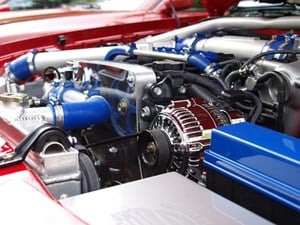
Heat Treatment in the Automotive Industry
Posted on March 28, 2017 in Blog

To kick off our blog series on the many products processed in an industrial furnace, we would like to highlight the automotive industry. The vehicles that we use to travel to work, home, activities and beyond are built almost entirely of components processed using an application requiring heat. Not all of the applications require a melting furnace or heat treating furnace. Some require an industrial oven at a lower temperature, but for this blog we are going to focus on the role Lindberg/MPH furnaces play in automotive production.
Engine parts, brake components, and more are die cast from melted aluminum or other types of metal such as zinc. A non-ferrous furnace is used to melt the metal. Some production lines use automated systems to transfer and load the pieces of metal into the furnace pot. The furnace may be used for both melting and holding prior to casting. The molten metal is then poured from the holding pot into a mold (the die) and then cooled.
The cast parts have additional processing to strengthen their molecular structure. These processes allow them to withstand wear and tear for years to keep your car running smoothly. Industrial heat treating furnaces are used for these applications and include stress relieving, hardening, tempering, normalizing and annealing. Without the proper heat treatment a part may be brittle and unable to withstand the stress of continued use.
At Lindberg/MPH, we have shipped both non-ferrous melting and holding equipment and industrial heat treat furnaces to the automotive industry. Our equipment has been in the field for over 100 years and continues to meet the demanding specifications these customers require. What other industries do we provide equipment for? Check back next month to find out!

